Hybrid of gooseberries and currants: features of the variety and care
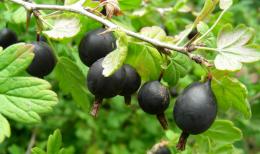
Yoshta is a hybrid of gooseberries and currants. This variety was invented by a German breeder. But today many gardeners and owners of summer cottages are engaged in its cultivation. To get a good harvest, you should know some rules landings and plant care.
Content:
- Features of the view
- Fruits of the plant and requirements for the planting site
- Features of planting and propagation
- Seedling care
Features of the view
Yoshta berries combine the smell of currants and notes of gooseberries. When breeders worked on this variety, they wanted to get a plant that had better properties than its predecessors. The goal was to increase productivity, eliminate thorns, and create a variety that would not be afraid of common diseases.
This hybrid grows into a powerful bush that spreads to the sides. It grows strong shoots; in one season the plant reaches 1.5-2 meters in length. An adult shrub has about 20 stems of different ages.
The rhizome deepens half a meter. Small green foliage appears on the bush, which falls off just before winter. The plant blooms with large yellow flowers that completely fill the yoshta.
Fruits of the plant and requirements for the planting site
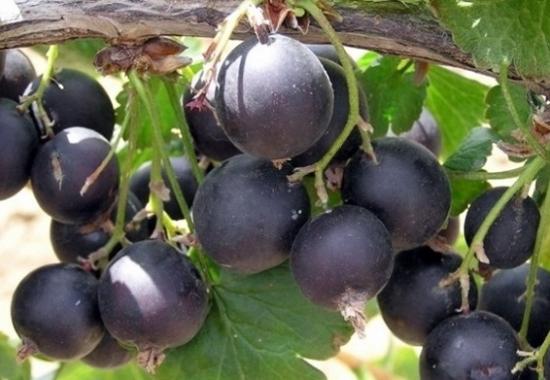
Yoshta's fruits grow large, they are purple in color, and their taste is sweet and sour. Each berry weighs 3-6 g. The fruits are saturated vitaminsAnd. When they ripen, they do not fall to the ground.They have thick skin, so they can be easily transported to another place.
Breeders have achieved that yoshta has good resistance to many diseases and pests. This plant can be grown in almost all corners of the country, as it tolerates cold well. It does not need to be wrapped for the winter. This procedure is performed if the cutting has just taken root and is still weak. The first fruits can be harvested 3 years after planting.
The bush will bear fruit well for 15-18 years. Often, about 10 kg of berries can be harvested from one plant. Yoshta prefers a spacious area that is well ventilated and lit. After planting, it will take root well if organic matter is added to the soil.
Experienced gardeners have noticed that the yield increases if currants and gooseberries are planted close to the yoshta.
Potassium fertilizers have a positive effect on the plant. But they are introduced into the soil when the fruiting period begins. Until then, adding organic matter to the soil is enough; this type of fertilizing is done in autumn or spring period.
Features of planting and propagation
It is recommended to plant a hybrid in spring or early autumn. There are no specific requirements for protecting the rhizome of a seedling during sale, since it is not negatively affected by air and will not cause the root system to dry out. When planting, you should adhere to the following rules:
- The bush spreads out as it grows, so you should retreat at least 2 meters between seedlings. This distance is reduced if the plant is grown for beauty rather than for maximum yield.
- Before planting, a hole measuring 0.4 meters is dug.
- Initially, a third of the hole is filled with a layer of soil that was removed from above, combined with humus.
- Deepening watered, and then the seedling is placed.
- It is worth paying attention to how the roots are located. They should not be bent.
- Finally, you should dig a hole and water the soil.
- It is necessary to ensure that air voids do not form near the rhizome, as this will affect the growth of the plant.
To propagate the hybrid I use offspring and cuttings. At the beginning of autumn, annual shoots are selected, and then short cuttings are cut from them, the length of which is about 20 cm. They should have 3-4 buds. After this, they are planted in the ground; 2-3 buds should remain above the surface of the ground. Next comes mulching. Before the onset of winter, it is worth creating protection from the cold with the help of spruce branches.
Seedling care
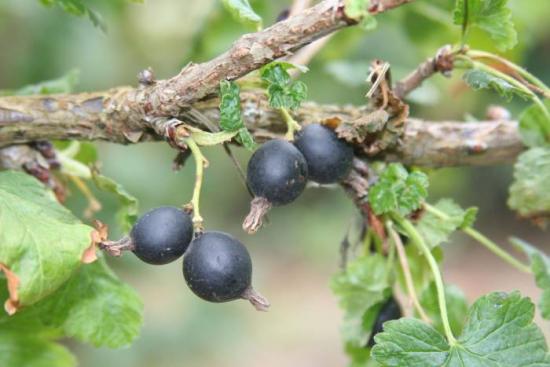
In order for yoshta to please you with its development and high productivity, you should stick to simple rules of care. After planting, the soil is mulched with humus, straw, and peat. This will return the temperature to normal, help the plant to take root, and improve root formation. In this case, there is no need to weed and loosen the soil.
After some time, it is worth updating the layer of mulch, since after a while it decomposes, providing nutrition to the shrub. You should water the plant systematically, but you should be careful, as it is not recommended to overwater it.
A hybrid of gooseberries and currants is a powerful plant that produces a large number of shoots. Therefore, it needs to control its growth. To do this, pruning is carried out regularly. The formation of the shrub should begin in the spring of the next year after planting.
From the branches that appear, about 4 of those that look the strongest are selected, and the rest are cut off.If this is necessary, then in the fall the tops of annual branches that are too long are removed. Next spring it’s worth starting to remove broken and diseased shoots.
This procedure is repeated year after year. As a result, the bush should have about 20 branches of different ages. When the stem turns 7 years old, it begins to bear less fruit, so it is recommended to remove it. So, a hybrid of gooseberries and currants is a unique plant. By following simple care rules, you can get a good harvest and enjoy the pleasant taste of the berries.
Video about the yoshta bush:

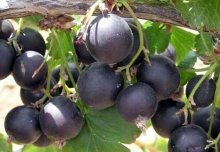
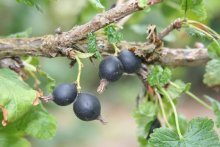
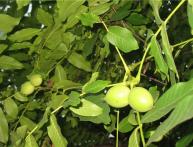
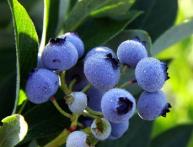
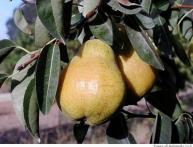
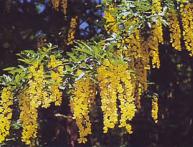
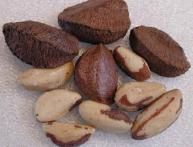
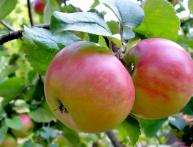
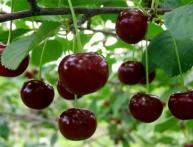
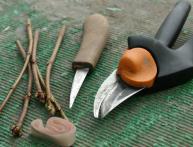
Comments
I have a very positive attitude towards gooseberries; we have two large bushes growing. But this is the first time I’ve seen such a hybrid and I’m very interested in it. I need to look for this miracle in our nurseries.